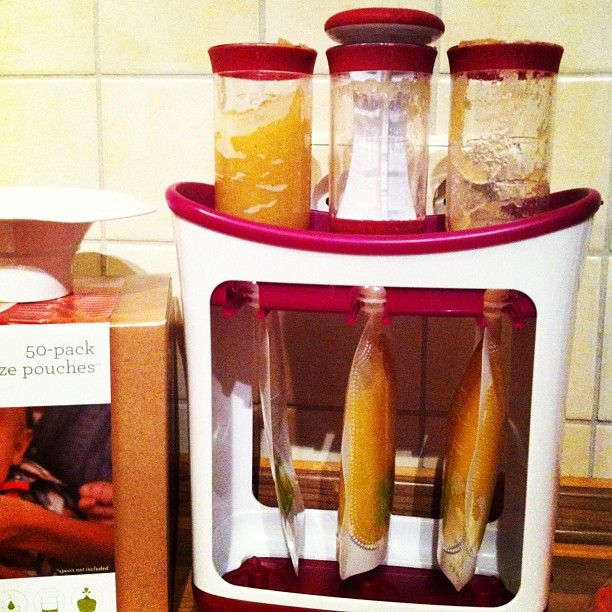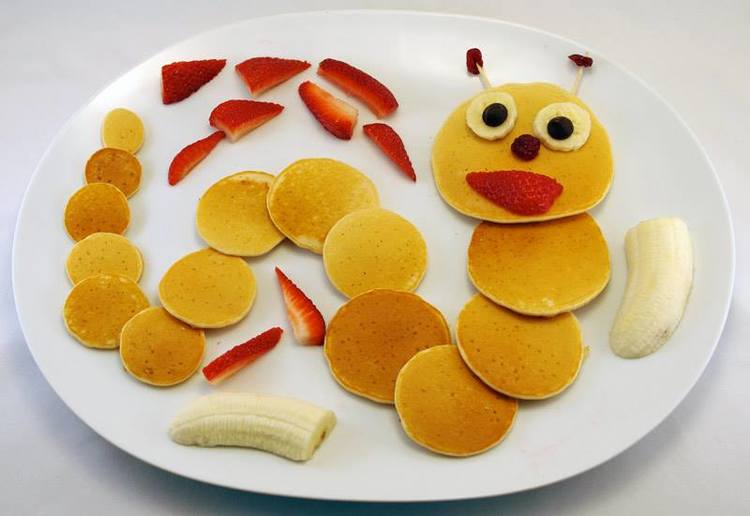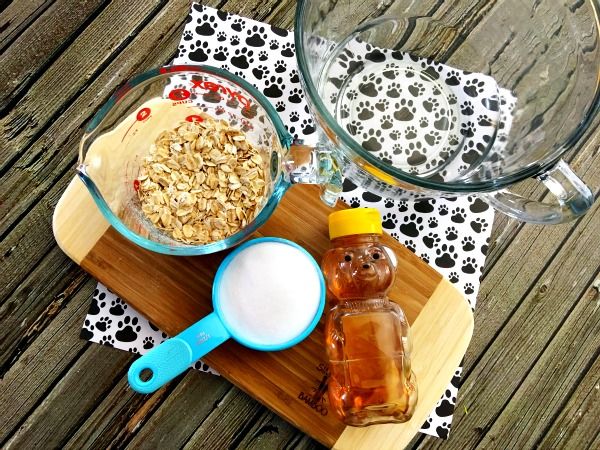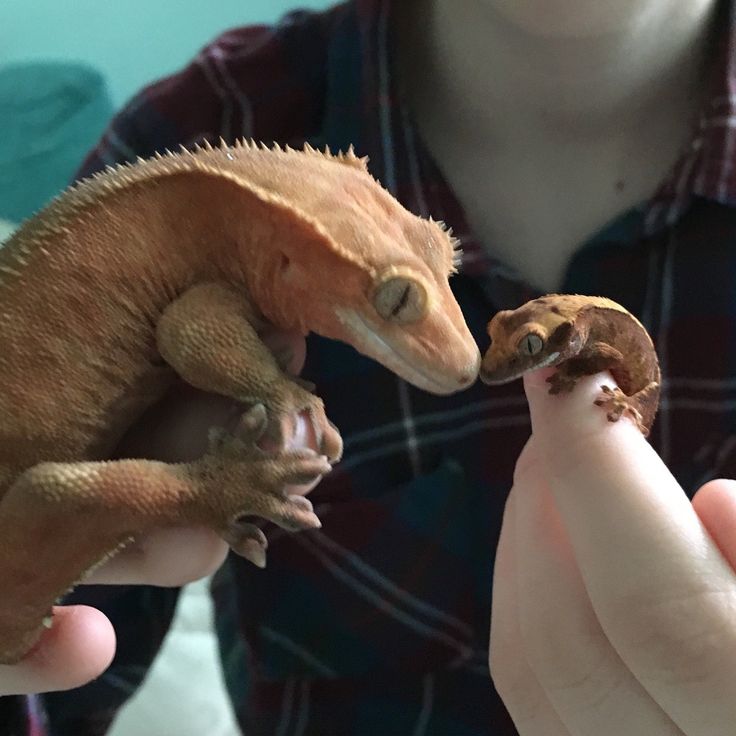How to feed baby turkeys
CARE & FEEDING OF BABY TURKEYS
Baby turkey poults are like any other baby – they need fresh food and water, and to be kept clean and warm. You can download our guide “Caring and Feeding of Baby Turkeys” or continue reading below.
Brooder
Keeping poults warm entails a brooder. A good brooder will have several things – it will keep the poults safe, have either bedding to absorb wastes or a wire mesh floor to allow droppings to pass through, and a heat source. A brooder can be as simple as a cardboard box with one to three inches of wood shavings for bedding, or as complex as a commercial metal box brooder. For a few poults, cardboard has the advantage of being cheap, disposable/recyclable, and sanitary. A wooden or metal brooder is more appropriate for larger numbers of poults, or if you raise many batches of poults per season. It should be scrubbed and disinfected between uses. Brooders should be large enough to allow the poults to get away from the heat source –3’x4’ is a good size for a few poults and will allow plenty of room for the first couple of weeks. Turkey poults grow rapidly, and will need a larger brooder after a few weeks – they should never be overcrowded. For the first few days, place paper toweling or an old cloth towel over the litter, so the poults learn to eat food, not litter. Keep the brooder clean – change litter at least once a week, more if you have many poults. Damp dirty litter and droppings can cause respiratory problems and infections. Poults should never be brooded on newspaper – its surface is too slick and can cause leg problems.
Heat Source
For a small number of poults, a 100-150 watt hanging clamp-style work lamp is sufficient heat. Clamp to the side of the box and have the bulb and hood hanging over the side. For a greater number of poults, a 250-watt infrared bulb can be used. Infrared bulbs get very hot – they should be kept a minimum of 18 inches away from flammable items (such as wooden or cardboard walls, and wood shavings). If using an infrared bulb, be sure to use a porcelain socket – plastic will melt. A brooder should not be evenly heated. It should have a cooler area for chicks to find their level of comfort. For the first week of life, the brooder should be at about 95 degrees. Poults will let you know if the brooder is too hot or too cold. Too hot, and the birds will crowd as far from the heat as possible. Too cold, and they will stand huddled under the light and peep loudly. Raise or lower the heat source accordingly. If you cannot physically raise or lower the lamp, use a different wattage bulb. For each successive week, the temperature should be lowered 5 degrees until completely feathered out at five to six weeks. If housed out of drafts, they should not need any additional heat beyond this age.
A brooder should not be evenly heated. It should have a cooler area for chicks to find their level of comfort. For the first week of life, the brooder should be at about 95 degrees. Poults will let you know if the brooder is too hot or too cold. Too hot, and the birds will crowd as far from the heat as possible. Too cold, and they will stand huddled under the light and peep loudly. Raise or lower the heat source accordingly. If you cannot physically raise or lower the lamp, use a different wattage bulb. For each successive week, the temperature should be lowered 5 degrees until completely feathered out at five to six weeks. If housed out of drafts, they should not need any additional heat beyond this age.
Water
Fresh, clean water should be available to poults at all times. The water should be cool, not hot and not cold. Birds drink to cool themselves down – if they start going through too much water, they may be overheated and the brooder temperature needs to be lowered.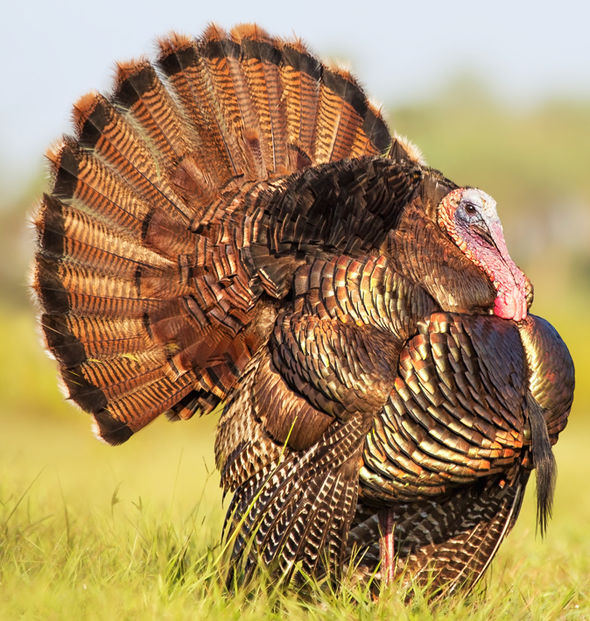 For 5 or fewer poults, a quart-size chick fount will take them through a few weeks; for more poults or older birds, a gallon fount will be a more appropriate size. You’ll know if you need a larger waterer if you need to fill more than once per day. Water should never be provided in an open dish – poults will track droppings and spilled feed through it and invite disease. For the first few days, the waterer can be placed directly on the toweling. When the toweling has been removed, place the waterer on a non-slip elevated surface, like a wire platform, to prevent the poults from scratching litter into their water. Increase height as they grow older – bricks or 2X4” wire-covered lumber boxes are equally useful.
For 5 or fewer poults, a quart-size chick fount will take them through a few weeks; for more poults or older birds, a gallon fount will be a more appropriate size. You’ll know if you need a larger waterer if you need to fill more than once per day. Water should never be provided in an open dish – poults will track droppings and spilled feed through it and invite disease. For the first few days, the waterer can be placed directly on the toweling. When the toweling has been removed, place the waterer on a non-slip elevated surface, like a wire platform, to prevent the poults from scratching litter into their water. Increase height as they grow older – bricks or 2X4” wire-covered lumber boxes are equally useful.
Food
Baby turkeys need to eat turkey/gamebird starter mash or crumbles, a blend specially formulated for their growth and development. Layer or breeder mash, crumbles, or pellets should never be fed to poults, not even as an emergency ration. It has a high calcium content that is toxic to poults and will cause bone, liver, and kidney problems or cause death. A good emergency ration is a 50-50 blend of rolled oats and cornmeal, whirled in a food blender to a mash or crumble consistency. They should not be on this emergency ration for more than a day or so, as it does not constitute a balanced diet. Starter feeds should contain no greater than 28% protein – too much protein causes growth problems. For the first few days, sprinkle feed on a paper towel so that poults can learn to eat. Poultry feeders come in many styles, but they should prevent feed spillage and wasting, and prevent contamination with litter or droppings. Elevating the feeder after the first few days helps.
A good emergency ration is a 50-50 blend of rolled oats and cornmeal, whirled in a food blender to a mash or crumble consistency. They should not be on this emergency ration for more than a day or so, as it does not constitute a balanced diet. Starter feeds should contain no greater than 28% protein – too much protein causes growth problems. For the first few days, sprinkle feed on a paper towel so that poults can learn to eat. Poultry feeders come in many styles, but they should prevent feed spillage and wasting, and prevent contamination with litter or droppings. Elevating the feeder after the first few days helps.
Chick starter can be used to raise turkeys, with cautions: It does not have enough proteins or vitamins for good development. If chick starter is used, be sure to supplement with brewer’s yeast at the rate of 2 cups per 10 lbs of chick starter.
Turkeys have no teeth – they need grit in the form of small rocks to grind their food. Baby poultry grit consists of very small stones, like coarse sand, similar to parakeet grit. It should never contain oyster shell or other forms of calcium – excess calcium is very detrimental to poults. Most store-bought small grit preparations already have oyster shell in them. You can “make” your own chick grit by purchasing a bag of decomposed granite from a building supply store. Wash the granite in a large tub, rinsing out fine sand and mud, and letting it dry. Save the larger pieces for adult poultry, and sprinkle a bit of the smaller grains on the turkey starter as if you were salting food. If poults are given no additional food other than turkey starter, they don’t NEED grit but it may help in certain situations (see below).
It should never contain oyster shell or other forms of calcium – excess calcium is very detrimental to poults. Most store-bought small grit preparations already have oyster shell in them. You can “make” your own chick grit by purchasing a bag of decomposed granite from a building supply store. Wash the granite in a large tub, rinsing out fine sand and mud, and letting it dry. Save the larger pieces for adult poultry, and sprinkle a bit of the smaller grains on the turkey starter as if you were salting food. If poults are given no additional food other than turkey starter, they don’t NEED grit but it may help in certain situations (see below).
Turkeys are good foragers and poults can go out on grass or range on warm days at a couple of weeks of age, if the lawn is unsprayed and grit is provided with their feed. Poults should only be allowed to range on clean ground, preferably where no adult poultry have been for 6-12 months to prevent bacterial or parasitic infestations. Grit may also be a good idea if you are using wood shavings as litter – it will help prevent crop impaction if litter is accidentally ingested.
Diarrhea and vent pasting (droppings sticking to their behinds) is a common problem in young poults. This is caused by a variety of problems, such as a brooder that is too cold. If pasting does occur, carefully pick off the dried droppings (warm water helps) so the vent does not become blocked. If pasting continues, try increasing the brooder temperature, or feed a blend of plain rolled oats processed in a blender mixed 50-50 with turkey starter. Sprinkling chick grit on their feed also helps prevent pasting.
Poults should be fed 28% protein turkey starter until 8 weeks of age. 24-26% protein turkey grower crumbles should be fed after the first 8 weeks until they are approximately 6 months of age. At that time, they can be switched to 16% – 18% lay pellets, crumbles, or mash. Additional calcium (for adults only) in the form of crushed oyster shell is beneficial, especially if the turkeys free range or are fed table scraps.
General management and FAQs
~~Turkeys are more difficult to raise than chickens or ducks. They are more delicate and sensitive to environmental and nutritional mismanagement. Good sanitation, disease prevention, and the right kind of food for their stage of development cannot be overemphasized. Turkeys are social flock creatures – you should never have just one. They need a buddy. A few turkeys can be housed with chickens as long as strict sanitation is practiced, as turkeys are more susceptible to diseases carried by chickens.
They are more delicate and sensitive to environmental and nutritional mismanagement. Good sanitation, disease prevention, and the right kind of food for their stage of development cannot be overemphasized. Turkeys are social flock creatures – you should never have just one. They need a buddy. A few turkeys can be housed with chickens as long as strict sanitation is practiced, as turkeys are more susceptible to diseases carried by chickens.
~~Poults that are listless, huddled with drooping wings, and have blood in the stools may have coccidiosis, a protozoan infestation. Good management of clean, dry litter (avoid damp wet spots from spilled water) and not letting poults range on land where adult poultry have been living will prevent coccidiosis. Antibiotics will not cure coccidiosis – only sulfa drugs such as Sulmet will treat it. Preventing this common babyhood disease through good sanitation is a much better course of action. Poults will gain a natural immunity to coccidia as they mature.
~~Poults and adults can become habitual feather pickers, where they pick at newly growing blood quills. Causes of this range from overcrowding, overheating, too much light, not enough protein, etc. This habit must be stopped early – feather picking can become difficult to break. Giving leafy greens to pick at, increasing brooder space, lowering heat, proper nutrition, and reducing light by lowering the wattage or switching to a red-colored bulb may help. Free range is often the best cure for behavioral problems.
~~Roosts can be provided beginning about four weeks of age, raising them higher as the birds grow older. Allow 6 inches of roost space for 4-week olds, 24 inches for adults. Turkeys prefer flat roosts, like a 2”x6” with the flat side up. Broad-breasted varieties or other meat birds should not be given roosts because it can cause crooked keels and breast blisters. 3”-4” of bedding should be provided for broad-breasted breeds of turkey.
~~Turkeys are happiest when they have more room. Coops and runs that allow more than the minimum space make healthier, happier birds. The minimum space requirements for open housing (coop with free range) is 4 sq. ft. per bird; for confined housing (never allowed outside) is 10 sq. ft. per bird.
Coops and runs that allow more than the minimum space make healthier, happier birds. The minimum space requirements for open housing (coop with free range) is 4 sq. ft. per bird; for confined housing (never allowed outside) is 10 sq. ft. per bird.
~~Turkey hens do not need turkey toms to lay eggs – they will produce eggs without a mate, but they won’t be fertile and cannot hatch.
~~Turkey feed comes in mash, crumbles, and pellets. Turkeys can waste an enormous amount of feed – and feed spilled on the ground can become wet, moldy, and toxic. Pellets are the least wasteful form, followed by crumbles and then mash. Feeders hanging or placed at the level of the birds’ backs will help prevent feed wastage.
~~Hen scratch or other whole or cracked grain mixes are tasty treats for turkeys. But, as with all treats, they should be fed in limited amounts. Scratch is not a balanced diet as it generally contains about 9% protein – much too low for a growing youngster or laying hen. Scratch should be fed as a treat, not as a primary feed. If scratch or other grains are fed, grit must be provided.
Scratch should be fed as a treat, not as a primary feed. If scratch or other grains are fed, grit must be provided.
~~2’x2’ nest boxes should be provided at about 5 months of age, to allow the birds to get used to them. The sooner you provide nests, the more likely they will use the nests rather than laying their eggs on the ground. They should begin to lay at about 8 months of age.
How to Raise Baby Turkeys
How to Raise Baby TurkeysThe store will not work correctly in the case when cookies are disabled.
JavaScript seems to be disabled in your browser. For the best experience on our site, be sure to turn on Javascript in your browser.
Toggle Nav
Search
STORESMY ACCOUNT
Menu
Account
Posted in: Poultry Care
Baby Turkeys (turkey poults) are fairly easy to raise, if you follow a few simple steps.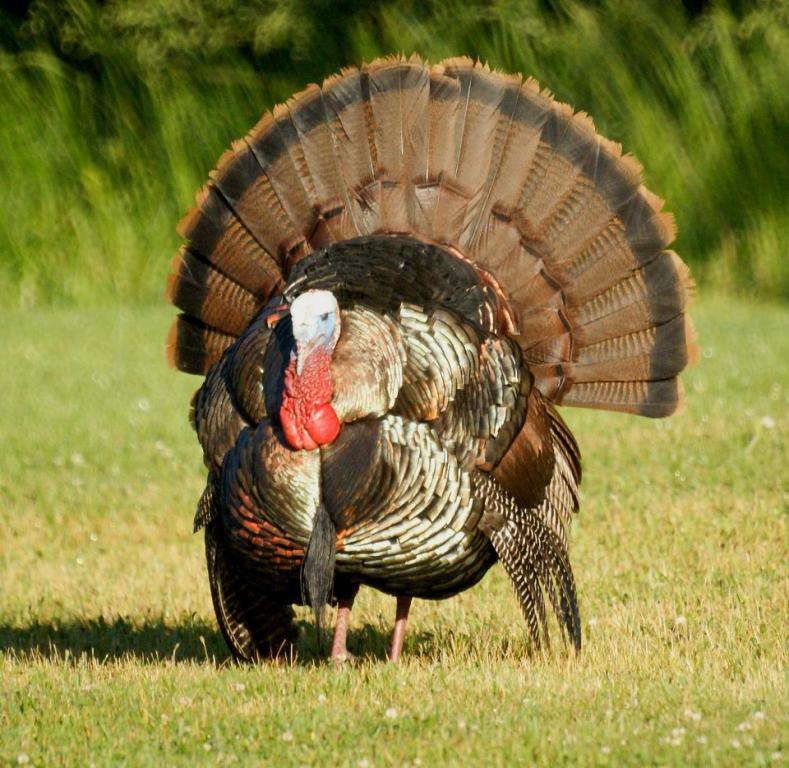 Turkey poults love heat. They will be happiest if you keep their brooder temperature at 95-100 degrees for the first week, then lower the temperature by about 5 degrees per week until they are fully feathered, approximately 6-8 weeks old. They will still appreciate a heat lamp at night for a few weeks after this period if the nights are cool. You can tell if they are comfortable by the way they arrange themselves in the brooder: all clumped under the heat source, they are too cold; all far away from the heat source, they are too hot; spread all over the brooder, they are comfortable. They will also cheep if they are cold or ill, and will be fairly quiet if they are happy. Always make sure they have room to get away from the heat.
Keep them clean and dry. Pine shavings or rice hulls make good bedding. Never brood them on slick surfaces like newspaper. Never give a turkey poult cold water - cold water can be deadly to turkey poults. The water should always be lukewarm, and it is a good idea to add a vitamin and electrolyte supplement to their water.
Turkey poults love heat. They will be happiest if you keep their brooder temperature at 95-100 degrees for the first week, then lower the temperature by about 5 degrees per week until they are fully feathered, approximately 6-8 weeks old. They will still appreciate a heat lamp at night for a few weeks after this period if the nights are cool. You can tell if they are comfortable by the way they arrange themselves in the brooder: all clumped under the heat source, they are too cold; all far away from the heat source, they are too hot; spread all over the brooder, they are comfortable. They will also cheep if they are cold or ill, and will be fairly quiet if they are happy. Always make sure they have room to get away from the heat.
Keep them clean and dry. Pine shavings or rice hulls make good bedding. Never brood them on slick surfaces like newspaper. Never give a turkey poult cold water - cold water can be deadly to turkey poults. The water should always be lukewarm, and it is a good idea to add a vitamin and electrolyte supplement to their water. You can also get them eating and drinking well by placing shiny colored marbles in the feed and water to get their attention. Change waterers daily or when they get dirty.
Turkeys need higher protein than Chickens. The poults will need a 28% protein starter for the first 6-8 weeks. We recommend looking for specialized turkey or wild game bird feed. After that, you can change them over to a feed with an 18% protein. Grange Co-op offers Rogue All-In-One (25AIO-50AIO). Never feed them layer pellets, as the calcium level is too high for growing birds. When they are about 3 weeks old, you can start sprinkling a little chick grit on their feed. Do not give them scratch until they are at least 8 weeks old, then you can give them a little as a treat. Grange Co-op offers Rogue Hen Scratch (50HS). When the hens begin to lay they should have free choice access to grit and oyster shell. They will appreciate greens, bread, garden trimmings and other treats as well.
Turkeys are very personable birds and you can easily teach them to eat out of your hand, come to your call, and they will often follow you around, begging for treats and attention.
You can also get them eating and drinking well by placing shiny colored marbles in the feed and water to get their attention. Change waterers daily or when they get dirty.
Turkeys need higher protein than Chickens. The poults will need a 28% protein starter for the first 6-8 weeks. We recommend looking for specialized turkey or wild game bird feed. After that, you can change them over to a feed with an 18% protein. Grange Co-op offers Rogue All-In-One (25AIO-50AIO). Never feed them layer pellets, as the calcium level is too high for growing birds. When they are about 3 weeks old, you can start sprinkling a little chick grit on their feed. Do not give them scratch until they are at least 8 weeks old, then you can give them a little as a treat. Grange Co-op offers Rogue Hen Scratch (50HS). When the hens begin to lay they should have free choice access to grit and oyster shell. They will appreciate greens, bread, garden trimmings and other treats as well.
Turkeys are very personable birds and you can easily teach them to eat out of your hand, come to your call, and they will often follow you around, begging for treats and attention. The more you handle them, the tamer they will become. Contrary to popular belief, turkeys do not drown in the rain, although young birds have been known to become ill and die if they become wet and chilled. They can be a very enjoyable bird to have around.
Heritage turkeys, the old-style varieties that are still naturally mating, are long-lived and hardy. Broad-breasted varieties are typically used only for meat, so they are not meant to be raised beyond 16 to 20 weeks. If you wish to use heritage turkeys for meat birds, it will take 6-8 months to grow them to eating size. They also make good breeding or show stock and pets. They are much more disease-resistant than broad-breasted varieties, and will do well on free-range or in pens.
The more you handle them, the tamer they will become. Contrary to popular belief, turkeys do not drown in the rain, although young birds have been known to become ill and die if they become wet and chilled. They can be a very enjoyable bird to have around.
Heritage turkeys, the old-style varieties that are still naturally mating, are long-lived and hardy. Broad-breasted varieties are typically used only for meat, so they are not meant to be raised beyond 16 to 20 weeks. If you wish to use heritage turkeys for meat birds, it will take 6-8 months to grow them to eating size. They also make good breeding or show stock and pets. They are much more disease-resistant than broad-breasted varieties, and will do well on free-range or in pens.
August 28, 2015
9926 view(s)
Search The Blog
Categories
Recent Posts
How to feed turkeys at home, tips
Turkeys are ideal for home poultry. This is because they have tasty, dietary meat, quickly gain weight, and do not need special care. In order for turkeys to grow actively, you need to provide them with good nutrition. Newborn turkeys do not have a swallowing reflex, so in the early days they should be fed with boiled eggs with herbs and boiled water, where you need to add a little sugar.
This is because they have tasty, dietary meat, quickly gain weight, and do not need special care. In order for turkeys to grow actively, you need to provide them with good nutrition. Newborn turkeys do not have a swallowing reflex, so in the early days they should be fed with boiled eggs with herbs and boiled water, where you need to add a little sugar.
After a week, eggs are removed from the diet, other feeds are used instead. It could be chopped green onions. Newborn chicks can be given gruel from boiled eggs, carrots and greens. Chicks should be given food every three hours, and in small portions. Then the interval between meals increases and at the same time the size of the feed increases. Porridge should be crumbly, not sticky, as their digestive system does not work well, and sticky food causes digestive problems.
To understand how to properly feed turkeys, you should know what can be included in the diet of chicks:
- Corn and wheat flour;
- Wheat bran;
- Boiled eggs with low-fat cottage cheese;
- Crushed shells and chalk are a mineral supplement.
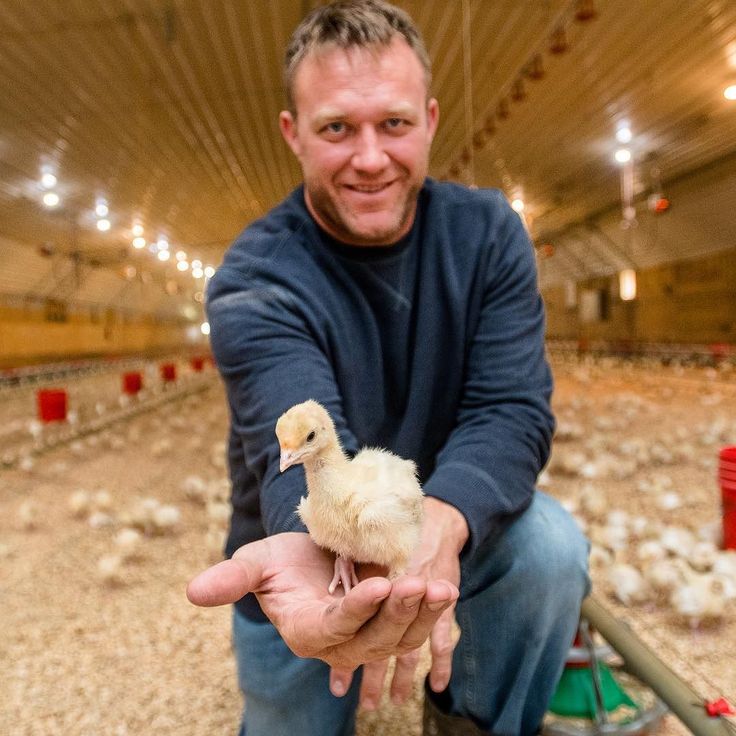
Drinking water should be at room temperature. Also yogurt is suitable for drinking. New foods are introduced into the diet gradually, so the chicks can get used to the new feeding regimen.
What should not be fed to a turkey?
It is not recommended to feed the birds with low-quality feed, which will adversely affect their development. It is better to exclude feed of animal origin, as they are poorly digested. Porridges need to be cooked and immediately given to the birds. Otherwise, they will turn sour and be unusable. Do not include oats, peas and other types of coarse cereals in the diet. Birds cannot digest such foods.
How to feed turkeys after 1 month?
Grown up chicks can be given any food. In a month old chick, the beak is already stronger, so they can already eat almost any food, the main thing is to warm it up. You can use cereal flour and mineral supplements. The marked components can be given as a main meal or given as a separate feed. The chicks are given food at the same time every day. From this, the chicks will quickly begin to gain weight. Monthly chicks are fed at least six times a day.
The chicks are given food at the same time every day. From this, the chicks will quickly begin to gain weight. Monthly chicks are fed at least six times a day.
What to feed turkeys for fast growth?
The diet of adult turkeys includes a variety of ingredients. In the diet of birds should be feed with proteins and amino acids. Turkeys are inactive birds and can quickly gain weight, so it is not necessary to feed more than the norm. You need to feed the birds three times a day with liquid gruel, where you can add greens. In the evening, whole grains or dry formulations are recommended.
When males are in breeding season, they lose weight and eat little. Then the birds should be given different vegetables, sprouted grains and shredded cheese. Birds can eat legumes. To increase the durability of eggs, birds are given a combined silage and carrots.
In the warm season of the year, food should be lighter and simpler. Turkeys need to be released to pastures where fresh grass grows. Also, food is prepared for the winter - acacia, viburnum, linden.
Also, food is prepared for the winter - acacia, viburnum, linden.
What should be the weight of turkeys at different ages?
The mass of an adult turkey should be 12 kg. To achieve such indicators, you should regularly monitor their weight. Monthly chick should weigh up to 1300 gr. If you adhere to the correct feeding regimen from the first days of the life of birds, then daily the mass should increase by 50 grams. For the first week, the numbers increase about 4 times. That is, after 7 days of life, the weight of the bird should be about 200 grams.
Starting from two weeks, the chick should gain about 40 grams of weight every day. Starting from a month, the daily increase is about 50-70 gr. At two months, the weight of a healthy turkey should be at least 5 kilograms. In order to gain weight steadily, you need to give up to 300 grams daily.
The bird demonstrates the most active weight growth at the 3rd month of life. At this time, the mass increases twice and reaches 10 kg. In order for the mass to increase and stand stably, you need to give at least 400 grams of feed every day.
In order for the mass to increase and stand stably, you need to give at least 400 grams of feed every day.
What does ShM-Agro offer?
Our company is engaged in the production and supply of feed in all Belarusian cities. We provide our clients with the following benefits:
- During production, the feed is steamed, which kills pathogenic bacteria. The use of such feed provides reliable protection of the bird from the development of diseases. That is, animals become resistant to diseases such as ASF and bird flu.
- We have low prices, thanks to the fact that we ourselves produce and supply our products. This allows us to reduce our costs and set prices lower than our competitors.
- Our feeds have the optimal ratio of vitamins and microelements required for the full development and growth of the bird. As a result of the use of such feed, egg production increases.
- Compound feed is completely natural. Our products do not contain antibiotics, flavor enhancers and synthetic growth activators.
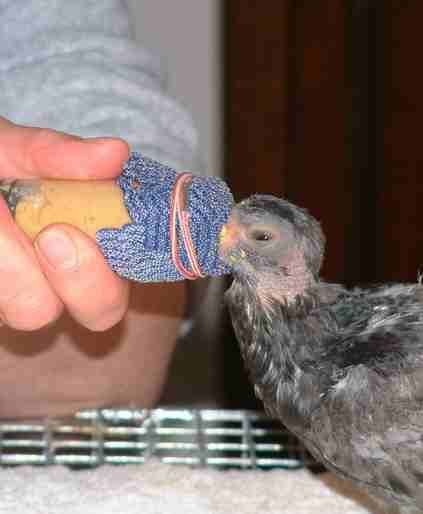 As a result, turkeys receive natural, healthy nutrition.
As a result, turkeys receive natural, healthy nutrition. - We always have a large amount of food in stock.
- In addition to retail sales, we are engaged in wholesale deliveries. Buying a large batch will save you money.
If you want to know what feed to feed turkeys, please contact our managers at +375 29 615-16-03 or +375 33 615-15-90. They will advise on issues of interest and take orders.
Similar articles:
Poultry balanced nutrition
The use of compound feed for poultry gives high growth rates. But animals often experience a deficiency of metabolic energy and an imbalance in amino acids.
More
Oilseed poultry feed
To obtain high productivity, poultry needs to create optimal conditions for keeping. The main criterion here is the organization of the diet.
More
Poultry feed
Raising poultry is a profitable investment. Birds are characterized by rapid growth, fertility, high productivity.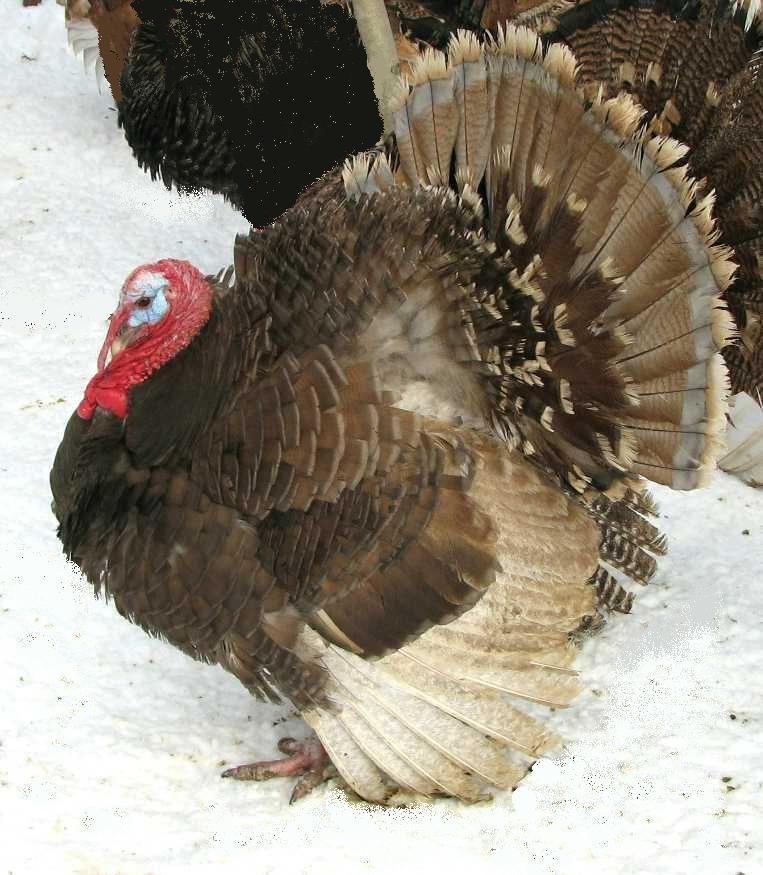 Breeding has two main goals - obtaining meat products and eggs.
Breeding has two main goals - obtaining meat products and eggs.
More
composition and norms of feed consumption
Delicious meat, short maturation period, availability of hatching eggs and young animals, makes turkeys more and more popular in private backyards. Before you start these majestic giants, you need to carefully prepare the room for keeping and, of course, decide how to feed the turkeys, and then the adult livestock. With the availability of ready-made feeds, this question is not worth it, it is enough to buy a special compound feed. If there is no choice, you will have to cook it yourself.
Content:
- Feed use
- Composition and consumption rates of feed
- Feeding turkeys
- Daily allowance
- Weekly
- After the month
- Adult bird feeding
- Do-it-yourself compound feed
- Turkey
- For adult birds
- Best time to start fattening poultry
Use of compound feed
For feeding turkeys of different age categories, the modern processing industry produces several varieties of complete feed. They are marked with the letter "PC", to which a digital code is added. For example:
They are marked with the letter "PC", to which a digital code is added. For example:
- PC 10 is recommended for breeding stock. Suitable for both turkeys and laying turkeys.
- PK 11 is otherwise called “start” (among the varieties, “pre-start” is produced) and is intended for feeding small turkeys under the age of 2 months.
- PC 12 - diets for the next category of turkeys, at 3 months of age.
- PK 13 has a composition specially selected for fattening young animals 4–7.5 months old.
- PK 14 is made specifically for growing breeding turkeys.
Before feeding turkeys, carefully read the composition and nutritional recommendations of the manufacturer. In addition to the listed compound feeds, their varieties are often produced. For example, PC 11-1 or PC 11-2, which allow even more differentiation in the feeding of small turkeys.
Compound feed can be used both in pure form and for making wet mixes.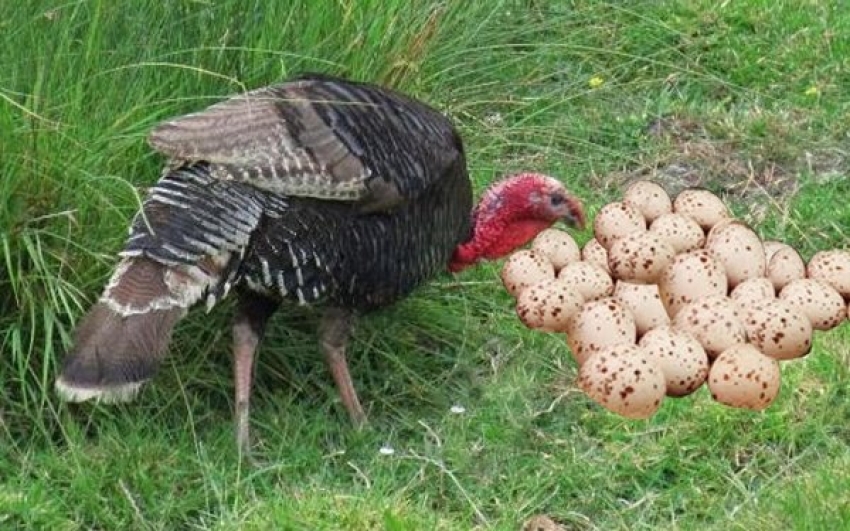
Composition and norms of feed consumption
In order to achieve the standard weight gain from turkeys, it is necessary to know how to properly feed the livestock. Ideally, use a specialized industrial compound feed for turkeys that takes into account their needs. It is easy to dose, there is no need to prepare a new mixture every time or keep a large supply of consumables.
Compound feed contains the following components in different proportions:
- Cereals. Turkeys are large birds. They require a lot of energy and carbohydrates. Therefore, the main emphasis is on corn and wheat. Depending on the region, sorghum, rice, triticale are added.
- Cakes and meals. The most common waste processing soybean and sunflower. It is extremely rare that whole soybeans or sunflowers are introduced into the composition instead, as this increases the cost of feed for turkeys.
- Proteins of animal origin. One of the most important components that allows turkeys to gain maximum mass.
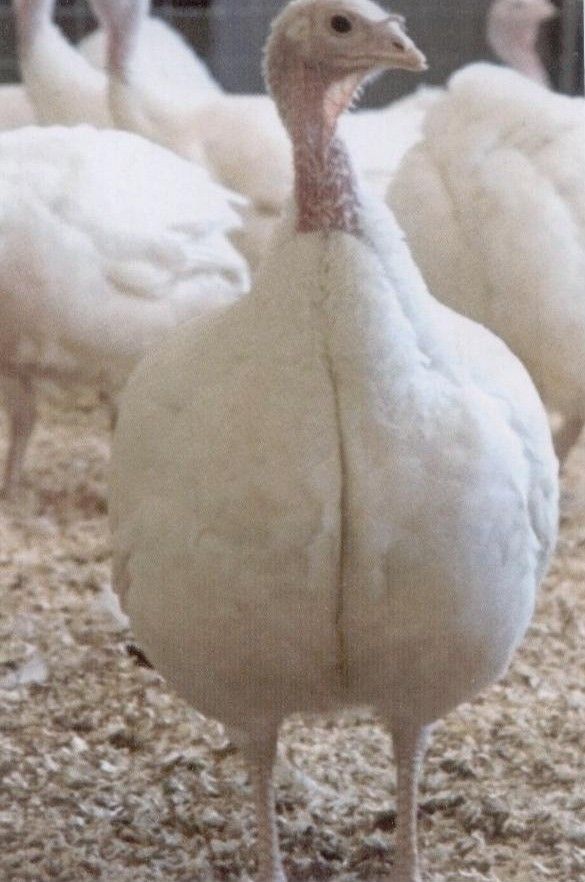
- Additives: mineral and vitamin premixes, herbal flour, antibiotics.
Do-it-yourself compound feed should be as close as possible in composition to industrial feed. This will avoid health problems in turkey poults, stunting in fattening and rearing young animals and reducing the productivity of breeding turkeys.
Feeding rates depend on the breed or cross you decide to feed. The needs of heavy hybrids are different from purebred turkeys and medium-heavy broilers. As a rule, loudspeakers give strictly defined individual recommendations for feeding turkeys.
As an example, the following consumption rates for intensive rearing of meat turkeys:
| Age (weeks) | Medium heavy turkeys | Heavy sneakers | ||
|---|---|---|---|---|
| Metabolic energy, kcal | Amount of feed, g/individual | Metabolic energy, kcal | Amount of feed, g/individual | |
| up to 3 | 95 | 34 | 113 | 39 |
| 4-8 | 308 | 110 | 477 | 159 |
| 9-12 | 616 | 220 | 980 | 316 |
| 13–20 | 941 | 336 | 1528 | 485 |
| 21-26 | 1084 | 387 | 1970 | 606 |
Typically 6–6. 5 months of age. turkeys are slaughtered, as further feeding is economically unprofitable.
5 months of age. turkeys are slaughtered, as further feeding is economically unprofitable.
For outbred birds with lower growth rates, as well as for breeding turkeys, a more sparing and balanced feeding regimen should be followed. For them, gaining excess weight means obesity, and, therefore, a decrease in reproductive functions.
Feeding of turkey poults
Feeding of turkey poults from the first day can be organized on complete ready-made feed. They are available for all age groups. Some manufacturers also further differentiate their products to ensure the most balanced composition.
At the same time, it must be remembered that there are several types of feeding that require compliance with certain rules:
- For dry feed, each turkey up to 4 months old must be given at least 4 cm of feeder length. By 5-6 months they will need 6 cm.
- With wet feeding, these norms are higher and amount to 10 and 12 cm, respectively.
- With mixed type, it is recommended to use separate feeders for different types of feed.

For poults at home, it is important to have fresh, not cold, clean water available at all times. Each of them should get at least 2 cm of the length of the classic drinker.
Day-old
As a rule, daily-old poults are fed wet food at home. Eggs or cottage cheese are excellent sources of animal proteins. Crushed grain, millet and yogurt are added to them. They are given as much as the kids manage to eat within 40 minutes. Then they clean it and the next time they pour it fresh.
The digestive system of small turkeys is unable to digest fiber. Therefore, refrain from taking risks and do not give them grass, herbs, grated vegetables or root vegetables.
This rule is especially important for tender meat hybrids. Pedigree turkeys are less whimsical about food; for them, juicy feed will help form the basis of immunity.
In the first days it is recommended to feed turkeys with vitamins and glucose. Check with your veterinarian for guidelines.
Ideally, of course, you need to feed daily turkey poults with high-quality full-ration compound feed. Well suited prelaunch. It will lay the foundation for strong immunity, give impetus to the development of the gastrointestinal tract, and serve as an incentive to gain mass.
In industrial compound feed for turkeys, a small proportion is allocated to barley and oats due to the high fiber content. They are similar in composition to chicken feed, but with a higher protein content.
Baby turkey food should be spread on paper or silicone molds to avoid injury to the soft beak. Daily babies need to be shown how to peck, for example, by planting a chicken for a while. Feeding is carried out every three hours.
Weekly
Feeding small turkey poults from a week of age using industrial feed is carried out with starter rations, which gradually replace pre-start ones. The need for proteins is reduced, but feed should be balanced, containing the necessary vitamins and minerals.
During wet feeding, do-it-yourself grain mixtures are supplemented with skim milk, curdled milk, milk powder, and succulent feeds are gradually introduced as sources of vitamins.
It is important that in the first days of life, turkey poults should be fed at least once every three hours. Leaving food in constant access is not recommended. In the air, dry and wet food oxidizes. They get litter, moisture, which provokes the development of pathogenic microorganisms. Therefore, immediately after feeding, the feeder is removed and washed thoroughly.
After a month
For turkeys up to two months inclusive, you can purchase PC 11. This is recommended for whimsical heavy crosses, so that the kids develop harmoniously. They need to provide a sufficient level of proteins in order to build muscle mass. At the same time, the mineral and vitamin composition is no less important. In particular, the lack of calcium, phosphorus and vitamin D provokes a lag in the development of the osteoarticular apparatus. This is fraught with the fact that the backbone simply cannot withstand heavy weight.
If there is no choice in the sale, you can feed monthly turkey poults with compound feed prepared by yourself. In this case, it is necessary to strictly follow the recipe, do not make arbitrary replacement of components.
In feeding turkeys at home, you need to follow a certain regimen. Monthly turkeys are transferred to a five-time meal.
Feeding adult birds
The more balanced the diet of adult birds, the greater the productivity of laying hens and the higher the fertility rate of turkeys. Of course, in addition to the diet, they are provided with exercise to prevent obesity and stimulate the immune system.
Adult breeding turkeys must not be fattened. Therefore, juicy food is necessarily introduced into the diet: chopped grass, grated vegetables, chopped root crops. In general, they will require, on average, more protein, minerals, and vitamins than other backyard birds.
Turkeys are fed three times a day. At the same time, dry food is given in the evening, and juicy food along with wet mash - in the first half of the day.
Do-it-yourself compound feed
If you have all the necessary ingredients, you can make your own compound feed for turkeys. In this case, you must be sure of the quality of the components used. The composition of cereals depends on the region of growth and the class of grain used. If you are not confident in your abilities, it is better to use the work of professionals.
For turkey poults
Boiled chopped eggs and cottage cheese are often used as feed for turkey poults from the first day. Such a diet can be replaced with pre-launch food made by oneself. To do this, mix (%):
- Shredded wheat (27) and finely crushed corn (60).
- Pre-screened soybean meal (10).
- Powdered milk powder (3).
The mixture is suitable for feeding small turkeys for the first three days.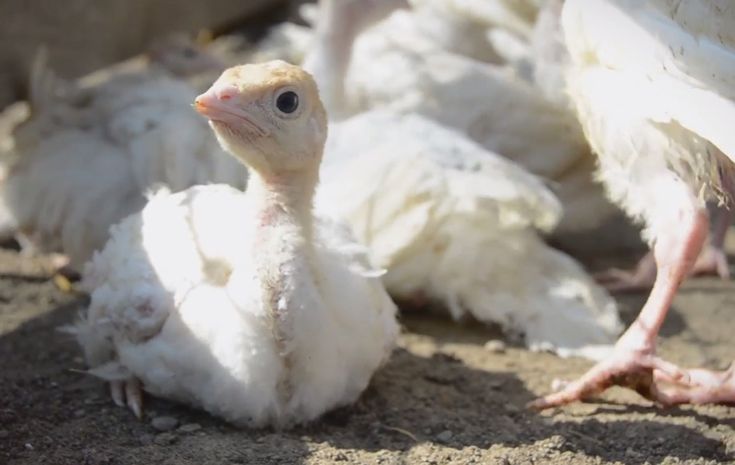 Then it is gradually replaced with starter feed.
Then it is gradually replaced with starter feed.
Compound feed for older turkey poults can be prepared according to one of the recipes:
| Ingredient name (taken in %) | age | ||
|---|---|---|---|
| up to 2 months | 2–4 months | 5–6 months | |
| corn and wheat | 37+0 | 40+18 | 33+10 |
| barley and peas | 0+7 | – | 35+0 |
| Meal (sunflower and soy) | 19+9 | 10.3+9 | 3+0 |
| Feed yeast | 3.55 | 5 | 3.3 |
| Fish and meat and bone meal | 7+8 | 5+5 | 4+0 |
| Dry skim or milk | 5 | – | – |
| Herbal (alfalfa) flour | 3 | 5 | 7 |
| Bone meal (substitute for tricalcium phosphate if available) | – | – | 1.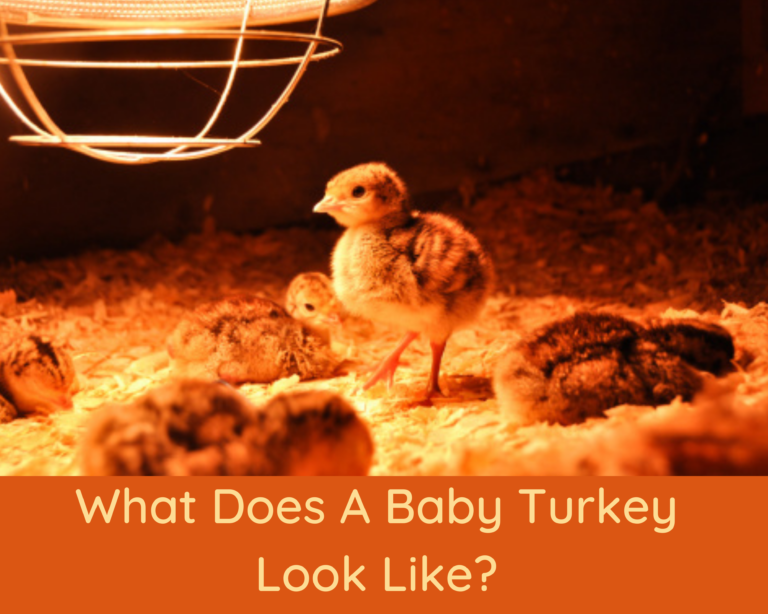 4 4 |
| Loose chalk, crushed limestone or shell | 0.45 | 1.7 | 1.9 |
| Salt | – | – | 0.4 |
Regardless of the recipe used in the Start feed, be sure to add premixes to the feed. Ideally, if they, in addition to vitamins and minerals, contain amino acids. Their number in the composition depends on the recommendations of the manufacturer.
The metabolic energy of such diets is 280/285/270 kcal of metabolic energy, respectively.
For adult birds
Adult turkeys are fed according to the way they are kept. With floor rations, they are more energy-intensive than with cellular ones. The needs of a laying turkey are different from what turkeys left to the tribe eat.
Feeding of turkeys can be organized with the help of complete compound feed prepared by one's own hands according to the following recipe:
- specific weight of corn/barley/millet, respectively - 34/25.
 4/19.4%;
4/19.4%; - herbal flour - 5%;
- sunflower meal and fish meal - 4% each;
- yeast - 3%;
- meat and bone and bone meal should be 2.5 and 1.8%;
- chalk or ground shells - 0.6%;
- salt - 0.3%.
The composition must be homogeneous. All components are crushed to the same fraction and only then mixed.
Feed for turkeys looks a little different. For outdoor maintenance, the following recipe is recommended:
- specific gravity of corn/barley/millet/oats – 35/24/11.2/2%;
- sunflower meal - 7%;
- meat and bone meal - 2% each;
- fish and herbal meal - 5.5 and 5%;
- yeast - 2.8%;
- chalk - 3%;
- salt - 0.5%.
In fact, there are many recipes for preparing compound feed for turkeys with your own hands, it is important to choose the most suitable one. At the same time, carefully monitor the reaction: if unwanted symptoms appear, change the diet.
When is the best time to start fattening poultry? Considering that they make serious demands on the temperature regime of keeping, it is advisable to start fattening turkeys at home in the spring, with the onset of heat. Then they will be ready for slaughter in the fall. You do not have to additionally heat the house or use artificial lighting.
Fattening turkeys for meat at home must be organized in accordance with the recommendations for a particular breed or cross. If the turkey poults are not adapted to walking, then they are limited to the poultry house. Given the availability of resources, such turkeys can be fattened in the winter.
Another thing is if the turkeys are able to forage. Walking will ensure the formation of natural immunity, will save feed.
The most important time for fattening is the first months of life, when the genetic mass building program is started. Lagging behind and weak turkeys are recommended to be culled, they will not show good gains.


